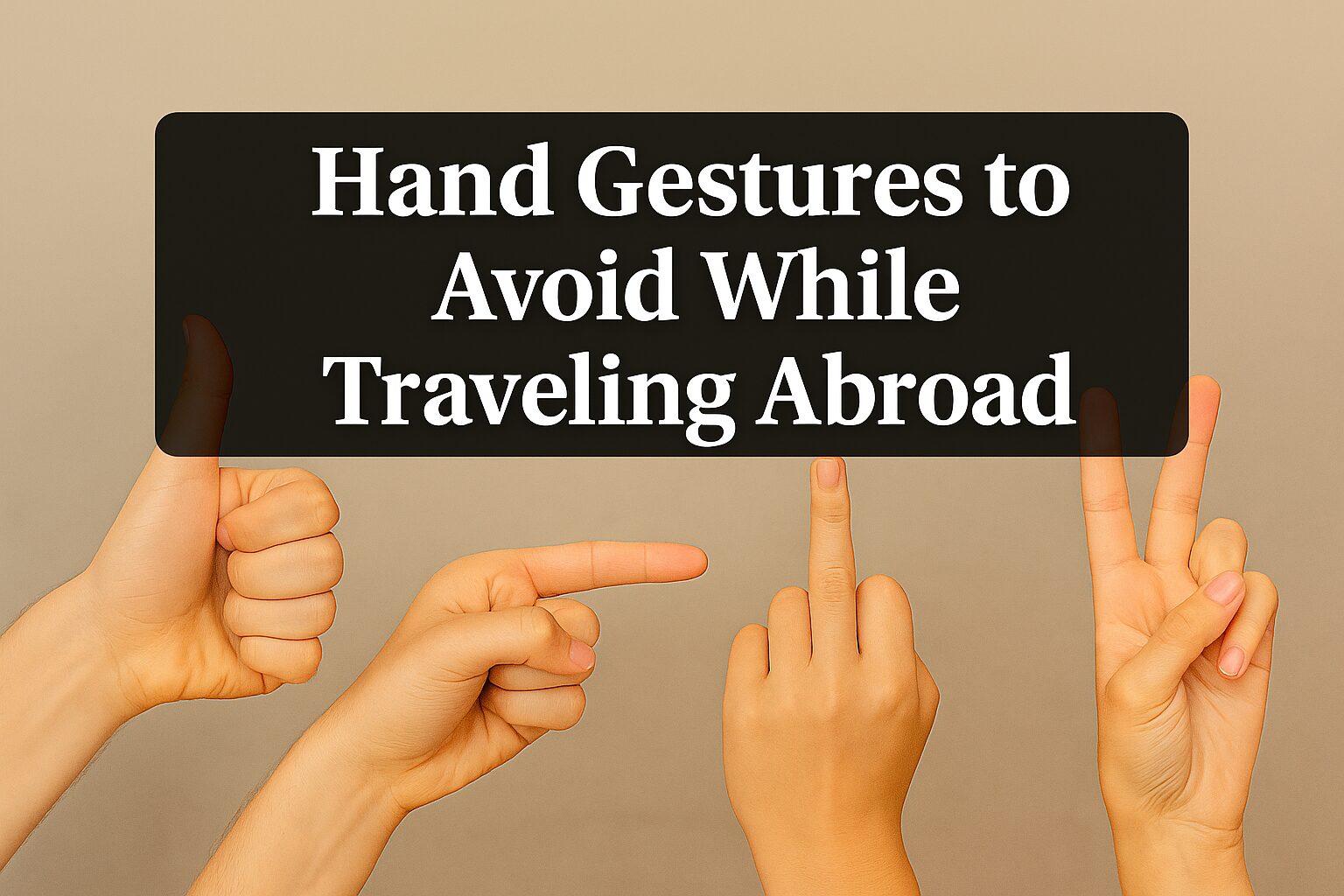Why Hand Gestures Matter in International Travel
When you’re abroad, hand gestures in different cultures can speak louder than words—sometimes in all the wrong ways. What seems like a harmless thumbs-up or peace sign might carry deeply offensive meanings in other countries. This guide helps travelers avoid embarrassing or even dangerous misunderstandings with a breakdown of the most offensive gestures around the world.
Understanding these nuances is as vital as carrying a passport. Let’s decode these signs and ensure your body language doesn’t offend.
The Middle Finger: Universal Vulgarity
The infamous middle finger, also known as the third digit finger, is widely recognized as an obscene gesture.
- In the U.S., U.K., and Europe, it’s an aggressive insult.
- Why is the middle finger offensive? Its history goes back to ancient Rome.
- In some cultures, showing the middle finger silhouette or even a middle finger gif cartoon online is considered digital rudeness.
⚠️ Avoid middle.finger, middle finge, or midle finger gestures entirely.
Peace Sign: Not Always Peaceful
The peace sign can be interpreted in several ways:
- In the U.K., flashing a reverse peace sign (palm inward) is highly offensive.
- An upside down peace sign or peace sign inverted may imply anti-peace sentiments or gang affiliation.
- A sideways peace sign often appears in casual selfies but has no fixed meaning internationally.
⚠️ What does the peace sign mean upside down? It can symbolize distress, rebellion, or disrespect in different contexts.
Okay Sign: Far From Okay in Some Cultures
The okay sign—forming a circle with the thumb and index finger—has:
- Positive meanings in the U.S. (“everything is fine”)
- Offensive connotations in Brazil (equivalent to a vulgar insult)
- Associations with white supremacy in the U.S. in recent years
❗ What does the okay sign mean upside down? In the U.S., it’s part of the controversial “circle game” or, more seriously, hate symbolism.
Pointing Fingers: Considered Rude Globally
- In China, Japan, and Indonesia, pointing with a finger is disrespectful. Use an open hand instead.
- Even in the U.S., prolonged pointing pose or hand pointing is seen as aggressive.
Symbol Confusion: Rock On or… Not?
The horn sign (index and pinky raised) means “rock on” in the West, but:
- In Italy and Spain, it’s a way to call someone unfaithful.
- In Brazil, it’s deeply insulting.
🚫 Hand gestures across cultures must be researched before travel.
Other Rude Hand Gestures To Avoid Globally
| Gesture | Culture Where It’s Offensive | Meaning |
|---|---|---|
| Two fingers with tongue out | Global (esp. youth culture) | Sexual connotation |
| Ring finger flip off | Western meme culture | Mocking middle finger |
| Peace sign with palm inward | U.K. | Equivalent to middle finger |
| DOA gang sign | U.S. | Potential gang affiliation |
| Gorilla middle finger | Meme culture | Vulgar humor |
Travel Smart: Hand Gesture Tips for Tourists
- Research hand gestures that are offensive in other countries.
- When unsure, use open hand gestures instead of fingers.
- Let your words do the talking—don’t rely on gestures.
- If showing signs in photos (peace, okay, etc.), verify local meanings.
- Use a travel advisory service before departure for cultural cues.
Final Thought
Your hands speak a language. When traveling internationally, make sure they aren’t saying something you’ll regret. Whether you’re flashing a peace sign or giving a thumbs up, take a moment to understand its local meaning.
For more cultural guides and smart global travel insights, stay connected with The Inspiring Insight.




